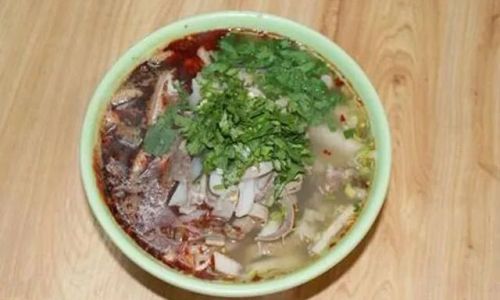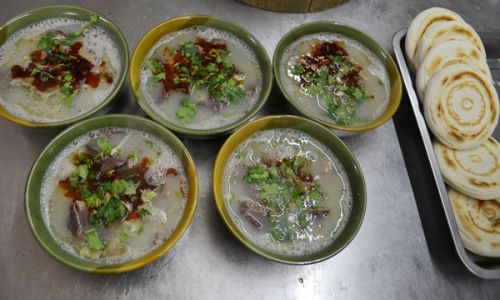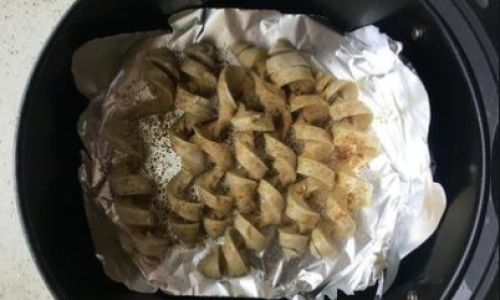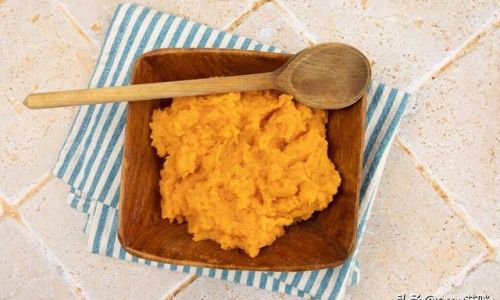Introduction

In the realm of culinary delights, few dishes evoke as much nostalgia and tradition as authentic goat offal soup, a hearty and flavorful staple in many cultures across the globe. From the bustling streets of Asia to the cozy eateries of Latin America, goat offal soup, often referred to as “tripe soup” or variations depending on the region, stands as a testament to the art of transforming humble ingredients into extraordinary meals. This article embarks on a culinary journey, guiding you through the steps to prepare a genuine, mouthwatering goat offal soup that captures the essence of its rich heritage.
Understanding Goat Offal Soup: A Cultural Perspective
Before diving into the recipe, it’s crucial to appreciate the cultural significance of goat offal soup. In many societies, offal dishes were once a necessity, utilizing every part of the animal to prevent waste. Over time, these dishes evolved, incorporating spices, herbs, and cooking techniques that transformed them into culinary delights. Goat offal soup, in particular, is celebrated for its nutritious value and unique flavor profile, making it a beloved dish in both rural and urban settings.
In China, for instance, goat offal soup is a favorite during colder seasons, believed to warm the body and boost energy. In Latin America, particularly in countries like Mexico and Colombia, it’s a cherished street food, enjoyed for its rich, earthy taste and the comfort it brings. Each region has its own variations, with specific spices, garnishes, and cooking methods that define their unique versions of the dish.
Ingredients: The Foundation of Authenticity
To create an authentic goat offal soup, the quality of ingredients is paramount. Here’s a comprehensive list of what you’ll need:
- Goat Offal: This includes tripe (the stomach lining), heart, liver, and kidneys. Ensure they are fresh and thoroughly cleaned.
- Bones: Goat bones, preferably with marrow, add depth and richness to the broth.
- Aromatics: Garlic, onions, ginger, and leeks are essential for building a flavorful base.
- Spices: Star anise, cloves, cinnamon, and black peppercorns provide warmth and complexity.
- Vegetables: Carrots, celery, and potatoes add sweetness and body to the soup.
- Liquid: Water or a combination of water and goat stock for a more intense flavor.
- Seasonings: Salt, soy sauce (optional for an Asian twist), and vinegar to taste.
- Garnishes: Fresh cilantro, sliced green onions, lime wedges, and chili peppers for serving.
Step-by-Step Preparation: Crafting the Perfect Broth

-
Cleaning and Preparing the Offal: Begin by thoroughly cleaning the goat offal. This step is crucial as it removes any impurities and ensures a pleasant texture and flavor. Soak the tripe in cold water with a splash of vinegar for an hour to loosen any remaining fats or debris, then rinse thoroughly. Cut the tripe into bite-sized pieces, and similarly prepare the heart, liver, and kidneys by trimming any sinew and cutting into small, manageable pieces.
-
Making the Broth: In a large pot, combine the cleaned goat bones with water, covering them by at least two inches. Bring to a boil over high heat, then reduce to a simmer. Skim off any foam or impurities that rise to the surface. This step, known as “scumming,” is vital for a clear and flavorful broth.
-
Adding Aromatics and Spices: Once the broth is clear, add the chopped onions, garlic, ginger, leeks, carrots, celery, and potatoes. Tie the spices (star anise, cloves, cinnamon, and black peppercorns) in a cheesecloth or spice bag and add to the pot. This allows the flavors to infuse without overpowering the soup or becoming too bitter.
-
Simmering: Bring the pot back to a gentle simmer. Cook for at least 2-3 hours, allowing all the flavors to meld together and the broth to develop a rich, golden hue. The longer it simmers, the more flavorful it will become.
-
Adding the Offal: After the broth has reached its desired flavor, carefully add the prepared goat offal pieces. Continue to simmer for another 45 minutes to an hour, or until the offal is tender and cooked through. Be mindful not to overcook, as this can lead to a mushy texture.
-
Seasoning and Final Touches: Taste the broth and adjust the seasoning with salt and soy sauce if using. A splash of vinegar can brighten the flavors and balance the richness of the soup.
-
Serving: Ladle the hot soup into bowls, ensuring each serving includes a variety of offal pieces and vegetables. Garnish generously with fresh cilantro, sliced green onions, lime wedges, and chili peppers. The acidity of the lime and the freshness of the herbs will elevate the dish, making each bite a burst of flavors.

Conclusion: Preserving Tradition Through Culinary Artistry
Authentic goat offal soup is more than just a meal; it’s a culinary journey that connects us to our past and celebrates the art of transforming simple ingredients into extraordinary dishes. By following the steps outlined in this recipe, you’ll not only create a nourishing and flavorful soup but also honor the traditions and cultures that have cherished this dish for generations.
Remember, the key to authenticity lies in the quality of ingredients, patience in simmering, and respect for the culinary heritage that has shaped this remarkable dish. As you savor each spoonful, let the warmth of the broth and the richness of the flavors transport you to the streets of distant lands, where the aroma of goat offal soup lingers in the air, inviting everyone to share in a timeless culinary experience.
In the end, it’s not just about the recipe; it’s about the stories, the flavors, and the connections that this dish fosters. So, gather your ingredients, roll up your sleeves, and embark on a culinary adventure that promises to delight your taste buds and nourish your soul. Enjoy your authentic goat offal soup!






0 comments